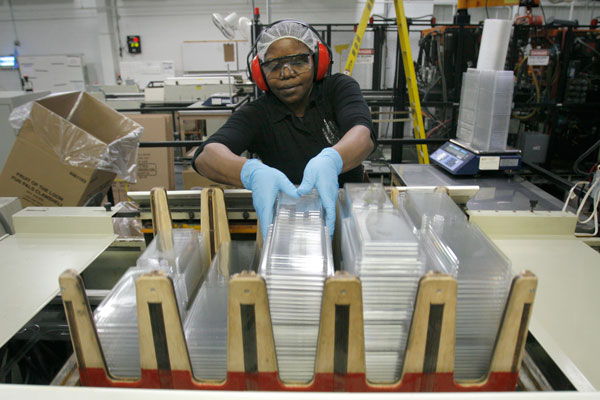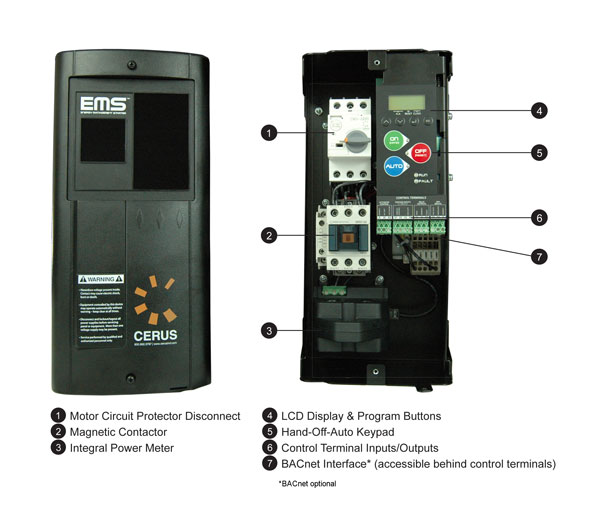Improved motor starters help Fabri-Kal achieve its green vision.
Fabri-Kal's 400,000-square-foot plant in Kalamazoo, Mich., was formerly a vacant brownfield site that was transformed during the last two years into a state-of-the-art design and manufacturing facility. In continuous operation as a company since 1950, Fabri-Kal produces custom packaging products in the foodservice markets.
 |
| A Fabri-Kal employee packages products |
As with many American manufacturers, Fabri-Kal's management wanted to upgrade its facilities to meet the company's long-term sustainability goals. When they renovated the Kalamazoo plant, they insisted on meeting Leadership in Energy and Environmental Design (LEED) Silver certification requirements.
LEED Certification
LEED refers to the green building certification system developed by the U.S. Green Building Council. It is the foremost program for the design, construction and operation of green buildings.
Achieving certification requires that facilities be rated according to different metrics for factors including efficient use of energy, water consumption, CO2 emissions reduction, improved indoor environmental quality and stewardship of area resources and sensitivity to their impacts.
Fabri-Kal's management team worked hand-in-hand with Kalamazoo-based architecture, engineering and interior design firm, Eckert Wordell, to comply with LEED certification requirements when designing the upgrade of the facility. The selection of components for the building's environmental controls was conducted by Pleune Service Company of Grand Rapids, Mich.
Motor Starter Selection
In selecting motor controls for the building upgrade, Pleune's engineer Kevin Jones wanted to design and construct a system that used the latest, most efficient technologies, as well as simplified and reduced the cost of future upgrades. Jones consulted with Rob Born from Michigan Air Products of Grand Rapids, Mich.
The selection of the starters was made to fulfill a series of detailed requirements. For example, Jones wanted motor starters for the exhaust and supply fans that were easy to integrate into the building's automation systems. The plant will ultimately be controlled with BACnet, and he wanted the starters to be upgradable in the field when the BACnet system's installation is complete. Using BACnet, an ISO and ANSI standard data communication protocol for building automation and control networks, building subsystems—such as HVAC units, alarm systems and power trending software can—communicate status and control information with a central building automation system.
 |
| Figure 1. The external and internal views of the starter with the components labeled. |
High functional integration was also important in the selection of electrical components for the Fabri-Kal upgrade to reduce the need for mounting and interfacing discrete control modules such as damper controls. If the motor starters also power and control the dampers, this would save interfacing cost and complexity.
However, network compatibility and cost savings were not the only considerations that drove the selection for the project. Jones also looked for a starter that had the intelligence to protect the building's electrical systems and simplify maintenance. An important requirement for the Kalamazoo site was power phase protection. Since the power supplied to the Fabri-Kal plant is not always consistent, the Pleune engineer wanted starters that would detect power phase failures and initiate an orderly shutdown before the chance of damage to the motors occurred.
“It only takes one incident of power fluctuation such as this to kill a motor,” says Jones. “Phase loss protection is very important.”
It is also important to detect motor overloads and belt loss on all belt-driven motors in every area of the building.
“Not only does this metering capability allow us to save energy and keep the motors from overheating,” says Jones, “but remote detection of motor status is also important because many of Fabri-Kal's systems are located in hard-to-inspect areas in the plant.”
The chosen starter was designed from the ground up to meet the needs of any automated building system. In addition to being the only starter to support a BACnet interface and integrated controls for dampers, this starter also provides an integrated power meter.
The ability to meter power usage allows for detecting problems such as belt loss, but the internal meter can also be interrogated by a remote building control system to enable active monitoring and control of building energy consumption.
One could add separate BACnet communications and power metering units to a conventional motor starter, but doing this would be more costly and time consuming to design and install, and it would invite errors and safety risks. The safety risks occur when technicians encounter a mix of low-voltage and high-voltage contacts while installing discrete power sensors and control modules within the same panel.
In contrast, EMS starters are safer and much more efficient, allowing for interfacing, control and monitoring of all starter functions and motor power consumption externally, without opening the unit's enclosure (see Figure 1).
In addition to traditional, high-voltage motor controls, these starters also provide low-voltage (24-volt) control capability. Jones used this to enable the connection of a starter directly to a four-channel controller. The controller runs four fans in the compressor room off the low-voltage terminal inputs of the starter without any interposing relays installed. The system also used the 24-volt inputs to the controller to provide time and temperature information to activate seasonal settings for controlling each starter.
“Selecting EMS starters from Cerus was an easy decision,” says Jones. “Not only did I get the best solution for controlling and protecting my fans, I also got a set of system components that will allow for integration of systems to support Fabri-Kal's future sustainable objectives.”


